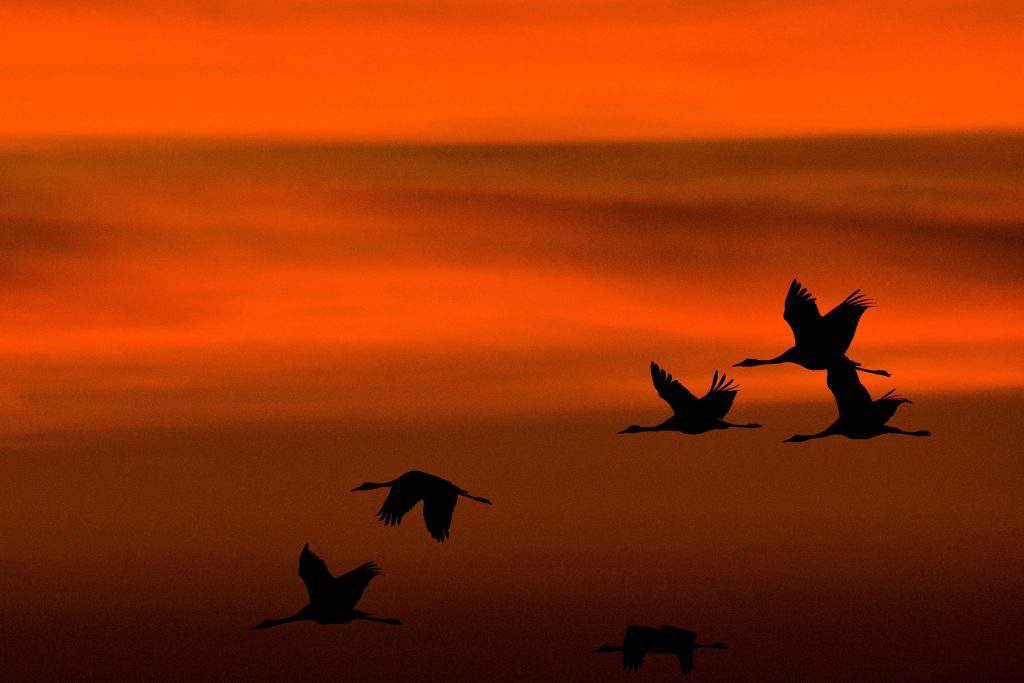The overflying cranes at Hortobágy make all Europe marvel at Hungary
When it comes to the Hortobágy of Hungary, most people would think about the endless wilderness, the undisturbed silence and the mirage stretching until the horizon. Although all of these are true and the park itself is on the World Heritage list of the UNESCO, there is also one more interesting thing, reported by femina.hu, that makes all Europe amazed at Hungary: that is the overflying cranes at Hortobágy,
In October, Hortobágy is full of beans: day by day, more and more species of birds arrive to any of the atificial ponds. Beside the cranes, the herons and the cormorants, there are geese, pied avocets, but the rarer species, like the lesser white-fronted geese and the grey cranes also show up in more and more groups. At sunset and sunrise, it is pretty easy to be spellbounded by their spectacular gatherings around the ponds. (In March, there was a rare visitor in the park. If you wish to learn more about it, check out this article.)
The loudly chirping group of birds mostly arrive from Finnish and Western Russian territories, take their time at Hortobágy and along the line of the Tisza river. After they have rested up, they continue their journey towards North Africa, Tunesia and Sudan. This year, myriads of birds have already arrived, but in the near future, an enormous group is anticipated. Their number reached the peak of 107,000 last year and a closely as big group is awaited this year, too.
An important and less-known fact about cranes is that they choose their partner for a lifetime, and for quite a long time, the nestlings also accompany their parents on their way. That is why it is unsuprising that so much respect is paid to these birds. To portrait it with an example,
in Asia, they are considered to be sacred animals and according to a Japanese belief, the cutout of around 1,000 crane birds from paper helps to make a wish come true.
Furthermore, a historical story is also attached to this bird. It is believed that one night, the overpowered Turkish army started to chase the Hungarians who considered the battle already lost. However, the more than 1,000 cranes resting in the swampland were awakened by their approach and the confused Turkish believed that the source of the noise comes from the Hungarian army for succour. Thus, in despair, the Turkish escaped from the moorland. Some sources also mention that the Hungarians running after them could catch some of the escapees.

Cranes were always popular birds in Hungary, but around the 1910s, when their number was very high, they were not avowed endangered species yet. Very often they were hunted down for their meat or were captured and kept in people’s homes because of their alarming voice. Moreover, their plume was also associated with high prestige. In fact, their number decreased mainly due to the regulations of the rivers, the drainage of swamplands and the reduction of their undisturbed territories. That is the main reason why it was great news that a few years ago, exactly after 100 years, people could observe again a pair of cranes in the Marcal Basin in Transdanubia.

To pay tribute to the overflying cranes at Hortobágy,
the Crane Festival is going to be organised between 20 October and 23 October
where apart from organised birdwatchings, several colourful programmes wait for the visitors like boating and traditional games. In spite of all these, without doubt, the best part of the birdwatchings is going to be a short but exciting journey by train through the neighbouring moorland to reach Lake Kondás, the spot of birdwatchings.
Photos: mti.hu
Source: femina.hu

